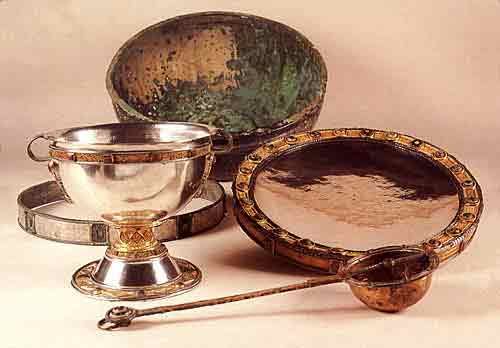The National Museum of Ireland has announced that an eighth century religious manuscript, found at Faddan More, near Riverstown in north Co Tipperary will go on public display, for the first time, next year.
The Faddan More Psalter
The psalter was found in Faddan More bog, on the North Tipperary border on the afternoon of July 20th, 2006, by Mr Eddie Fogarty, a workman who was operating a mechanical digger. Mr Fogarty spotted the object in the bucket of his digger and contacted the bog’s owners, Mr Kevin and Mr Patrick Leonard, who gathered up the fragments and covered them with wet peat, before notifying the staff of the National Museum.
Trinity College manuscript’s expert Mr Bernard Meehan said it was the first discovery of an Irish early medieval document in over two centuries.
A specialist team from the museum, which later arrived at the scene, discovered that the psalter had fallen open, showing lines from Psalm 83 written in latin and clearly visible, “Quam dilecta tabernacula tua Domine exercituum,” (Translated “How amiable are thy tabernacles, O LORD of hosts! “) It should be noted that Psalm 83 then, is now Psalm 84 today.
The 1,200 year old manuscript, now appropriately named the “Faddan More Psalter” will form the centrepiece of a permanent exhibition at the National Museum’s Kildare Street gallery, following completion of its restoration work by senior conservator, Mr John Gillis .
The “Faddan More Psalter” is expected to go on display to the public in the early Summer of 2011 .
This is not the first priceless treasure found in North Tipperary. An 8th or 9th century chalice, was found as part of five liturgical vessels, known as the Derrynaflan Hoard, on the 17th February 1980 near Killenaule in County Tipperary Ireland.
According to art historian Michael Ryan this hoard “represents the most complex and sumptuous expression of the ecclesiastical art style of early medieval Ireland as we know it, in its eighth and ninth century maturity.”
The chalice was found with a composite silver Paten, a hoop, which may have been a stand for the Paten, a liturgical strainer and a bronze basin inverted over the other objects.
These latter historical and priceless items are currently on display in Dublin, in the National Museum of Ireland.
It is the currently held view amongst many historians that both of these objects, or at the very least replicas of same, should now be housed in their native County Tipperary, where they would attract much needed tourism to the area. Call it a kind of decentralisation or what you will.



Leave a Reply